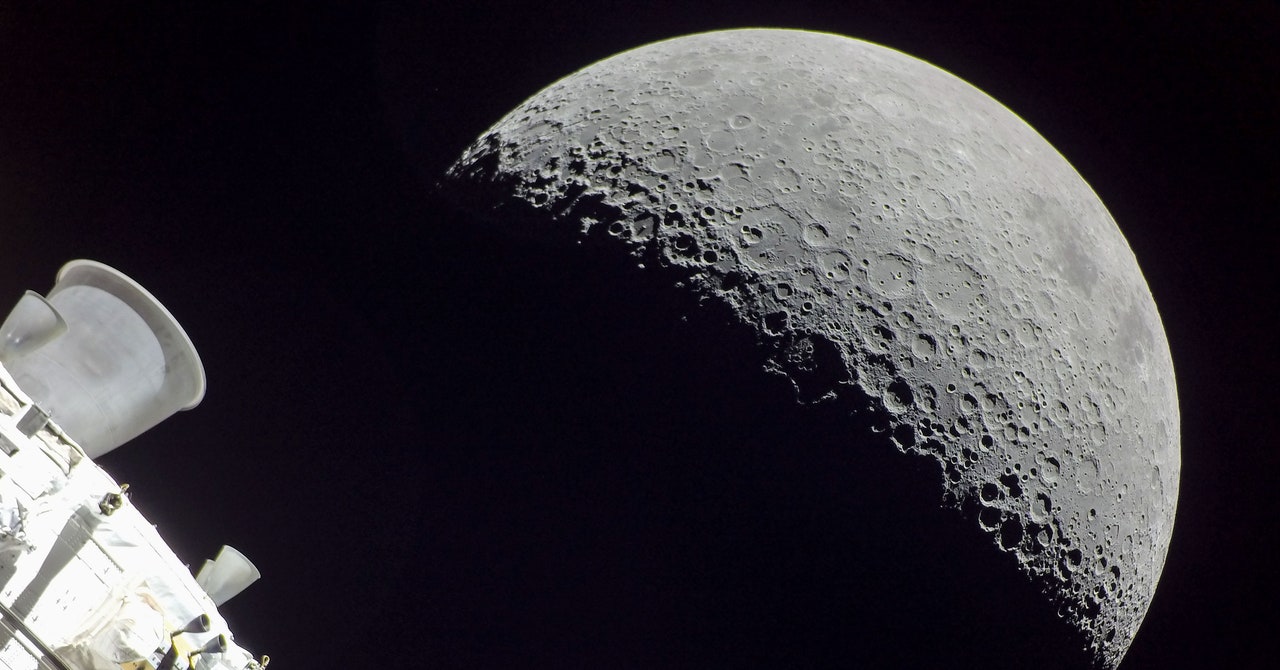
This is where Moonlight will come in. The system may involve three navigation satellites in lunar orbit plus one dedicated to communication. That way, multiple satellites can ping Earth at any given time, and the system would be resilient if a single orbiter fails. (Because the moon lacks an atmosphere, the satellites would be more vulnerable to solar storms and other space weather than the GPS or Galileo systems.)
Most of the technologies needed for Moonlight are already available, since the ESA and NASA already have satellites orbiting Earth. But the moon project comes with its own challenges. For example, if one were to place an atomic clock on the moon and compare it to an identical one on the Earth, the lunar device would gain 56 microseconds every 24 hours. That would add up, eventually messing with the precision of navigation systems.
This misalignment happens because of general relativity, thanks to the moon’s lower gravitational pull, says Patla. Technically, the ideal measure of time would come from an atomic clock in the vacuum of space, where there’s essentially no gravity. Atomic clocks on Earth are affected by the planet’s gravity, but they’re a known standard. Lunar time would be affected by a different gravitational pull that would contribute to the additional microseconds. Still, it’s not a huge problem: The lunar time offset is predictable and can be corrected.
There’s also the question of what orbital path those satellites should take. Most satellites around Earth have circular orbits, and that’s useful for a population that’s sparse at the planet’s poles and spread throughout the middle latitudes. But realistically, most astronauts in the next decade or two will be stationed near the lunar south pole because it hosts water ice that people want to mine. The ESA is looking into deploying the satellites on elliptical orbits so that they’ll have more time within range of polar regions. Later, the agency and its partners could add satellites on different orbits to better cover other areas, and ground stations for additional accuracy.
The satellites will use a different frequency (S-band, at around 2 to 2.5 megahertz) than their terrestrial counterparts (L-band, at about 1 to 1.6 MHz) so that their signals don’t interfere with Earth-based communications or disrupt future radio telescopes on the far side of the moon.
The ESA is planning to launch a technology-testing satellite called Lunar Pathfinder by the end of 2025, and then have Moonlight’s “initial operational capability” ready by the end of 2027, with a dedicated satellite providing limited communication services and a first navigation ranging signal. The full constellation of—most likely—four satellites would be operational by the end of 2030.
And Moonlight won’t be alone. NASA’s developing its own analogous system, working on a similar schedule. The Chinese space agency is planning its satellite constellation as well, and some of those spacecraft could launch by the end of 2024, with the initial goal of supporting Chang’e 6, a lunar sample return mission. The Japanese space agency has one in the works too, with a demonstration mission scheduled for 2028.
These initiatives will play a fundamental role in the future of space travel, Ventura-Traveset says. New generations of spacecraft, including commercial ones, won’t need complex, expensive antennas or landing systems; they can simply tap into these. “There are more than 250 missions over the next 10 years intending to go to the moon,” he says. “We need to have this infrastructure. It will be an accelerator for the moon economy.”
On a philosophical level, these programs represent a profound shift in the concept of timekeeping, says Nesvold. “Throughout most of human history, we have used space to tell time by, including the plants and stars and phases of the moon,” she says. “It’s only relatively recently that we have come up with this idea of clock technology, which lets us coordinate with each other without having to depend on space. And now we’re implementing this technology on the moon itself.”


